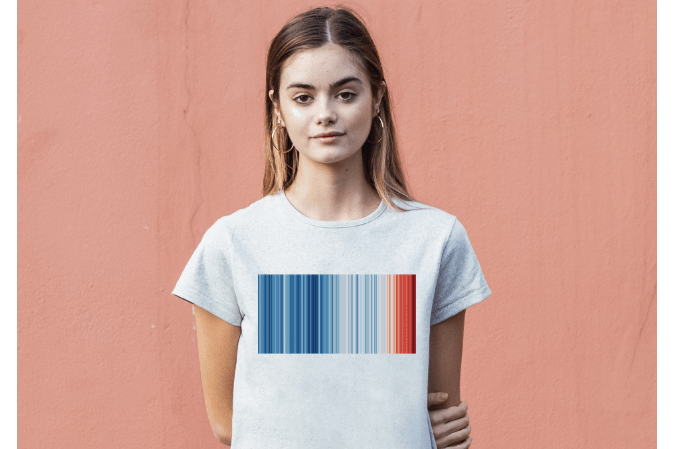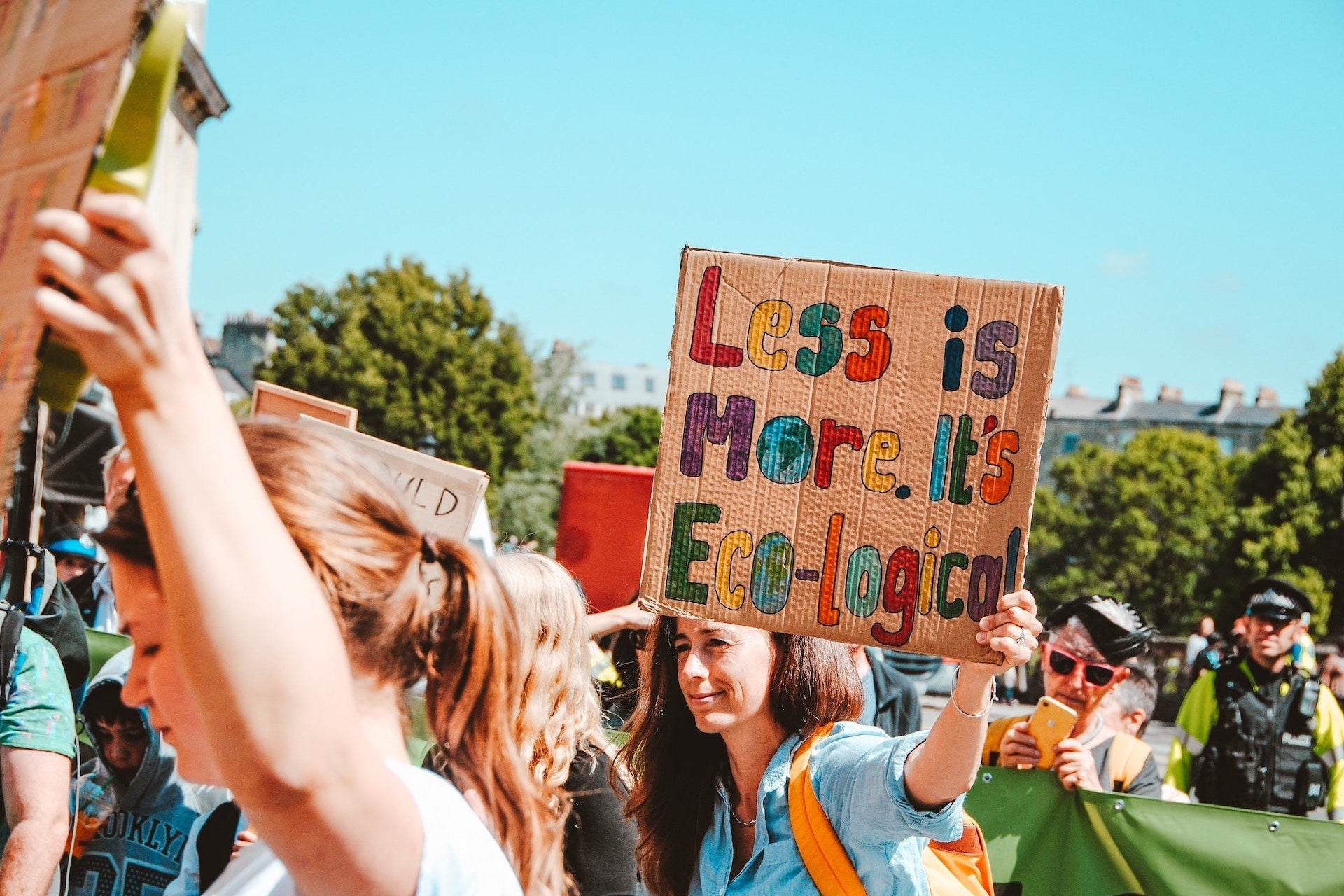People expect more from brands. And rightly so. The fashion industry produces around 10% of the world’s carbon emissions, 85% of textile waste, a great deal of biodiversity loss, and the exploitation of garment workers. That’s a lot of damage.
Things must improve! Fashion brands are responsible for making the just transition to move towards sustainability. Yet, there are challenges to consider if we want a better understanding of what’s hindering the growth of sustainable fashion, even if sustainable fashion compares favourably against fast fashion.
Here is a list of 5 challenges facing sustainable fashion:
1. Sustainable materials are expensive and hard to access
Sustainable materials like organic cotton can be more expensive and harder to source at scale than traditional materials like virgin cotton and polyester. The additional sustainable production methods - like non-toxic dyeing, regenerative farming, and reduced water usage - also increase costs.
Many sustainable fashion brands also want to invest in ethical labour. This is of course more expensive because garment workers would be paid a living wage! But it’s important to highlight that companies still market clothing as sustainable without investing in the ethical treatment of workers down the supply chain.
Fast fashion cuts corners to make their clothes as cheap as possible by compromising on the above - also known as ‘the true cost’. Now, these prices are what we’re used to. That’s why businesses and buyers are hesitant to invest more than the bare minimum.
2. People want to buy sustainably, but find it too expensive
Fast fashion consumption is still the norm for many communities around the world.
How do we get people to shift to more sustainable brands, which 99% of the time have higher upfront costs? As a result, many people think that sustainable fashion is elitist and inaccessible. Let’s face it - even thrift shops, once meant to provide more affordable clothing, have become trendy and overpriced.
But there’s an argument that sustainably-made garments can instead save you money in the long run. How? Calculating the cost per wear of an item assesses its quality and longevity. It reveals whether an item is cheaper depending on how many times it’s worn. To calculate, you would divide the price tag of an item by the number of times you wore it. This calculation cleverly reveals that sustainable items can have a cheaper cost per wear than fast fashion items - as they last longer and are worn more.
But getting people to change their mindset to invest in longevity is a barrier in itself. Other personal factors come into play. The buyer of the garment has to think about taking proper care of the item so it lasts. Plus, keeping an item for as long as possible is tricky since our flaky attention spans are accustomed to rapidly losing love for an item.
As a side note, some brands offer “buy now, pay later” payments! This option is mindful of those who can’t pay higher prices in one click. Be mindful though that you don't accumulate debt with a "pay later" approach to life.
3. Recycling technologies are underdeveloped
There’s one big obstacle to circularity within fashion. Less than 1% of clothing is recycled into new clothing.
Most recycled clothing comes from plastic bottles. Another common source is old fishing nets found in the ocean. The problem is that we’re missing the commercial scaling of technologies that can recycle fabric blends. Most clothing today is made from blends, like polyester-cotton and viscose-nylon. Garments created from a single material are much easier to recycle into new ones. But they’re also the rarest to find.
An added complication is the clothing collection and sorting process requires a lot of manual labour. This is because advanced, accurate, and automated fibre sorting is not yet developed.
Nevertheless, this is a challenge that is likely going to become less tricky over the coming years. As technology improves, fingers crossed that recycling in fashion is going to become much more of a thing.
4. Laws and regulations are virtually non-existent
For sustainable fashion to progress, fast fashion brands must be a part of the global movement. But unfortunately, due to scarce and unreliable laws and regulations, brands have been able to get away with a lot - even deaths and injuries to the innocent folk who make our clothes.
In an ideal world, government policies and industry regulations would support and incentivise sustainable fashion brands. In turn, sustainable clothing could be more accessible and less ‘elitist’.
The good news is that many parts of the world - especially the EU - are proposing and approving stricter rules against fast fashion. But it’s still hard to guarantee that brands will be held accountable.
5. Scaling up can sometimes mean compromising ethics
Achieving economies of scale to make sustainable practices more cost-effective is one thing. Not compromising on ethics for profitability is another. Ethics and profits are not always easy to balance. As companies grow, the core values that are usually easier to maintain as a small business can be threatened as the demand for mass production increases.
Then the question is: is sustainable and ethical fashion really scalable? Or will it always come with trade-offs?
Here are a few ways that sustainable fashion can outmanoeuvre these challenges:
- Try to stop making clothes out of fibre blends that are difficult to recycle. Opt for single-material clothing, when possible. At least until better technologies are further developed to tackle the multiple-material dilemma.
- In the same way that technology is a barrier to sustainable fashion, it can also act as a catalyst. At POMP, we use print-on-demand technology to keep our costs low. We don't produce more clothing than we need to. We don’t have the overstock problem that fast fashion faces.
- QR codes might seem a little passé post-pandemic, but in fashion, they can enable simpler sustainability. At POMP, we use them to allow the easy return of clothes for recycling. They can also provide transparency by linking to more information on supply chains. And, they can replace hangtags, reducing waste while saving costs, by being woven directly onto the garment.
- To further help keep costs low, brands can purposefully cut patterns that maximise fabric use, reducing scraps and instead incorporating them into new designs. Lots of sustainable brands turn leftover fabric scraps into upcycled accessories.
- Emphasise the importance of longevity and circularity. Brands - through their content and communications - can be a conduit of behavioural change. This is something we try to make a small impact with on our blog and social media. Take this post, for example!
Sustainable clothing at POMP
Here at POMP, we design clothing to be remade. We use one material only: certified organic cotton. And you already know what that means! We can recycle returned garments into new clothing with ease. We simplify that process using the QR codes mentioned above. To ensure quality and longevity, our recycled range is made from 50% recycled organic cotton and 50% virgin.
Still, this is a complex topic full of contradictions. What are your thoughts on the challenges we addressed above and our solutions to them? Do you have any interesting takes on the challenges sustainable fashion is facing? Let us know in the comments below!


 Our recycled sweatshirt
Our recycled sweatshirt

